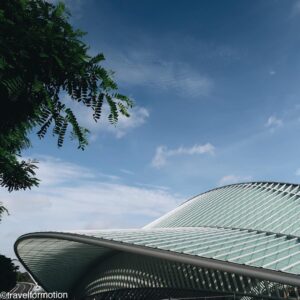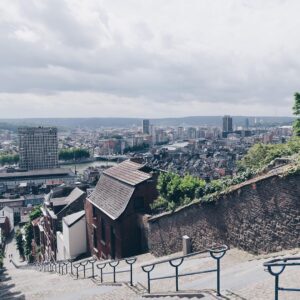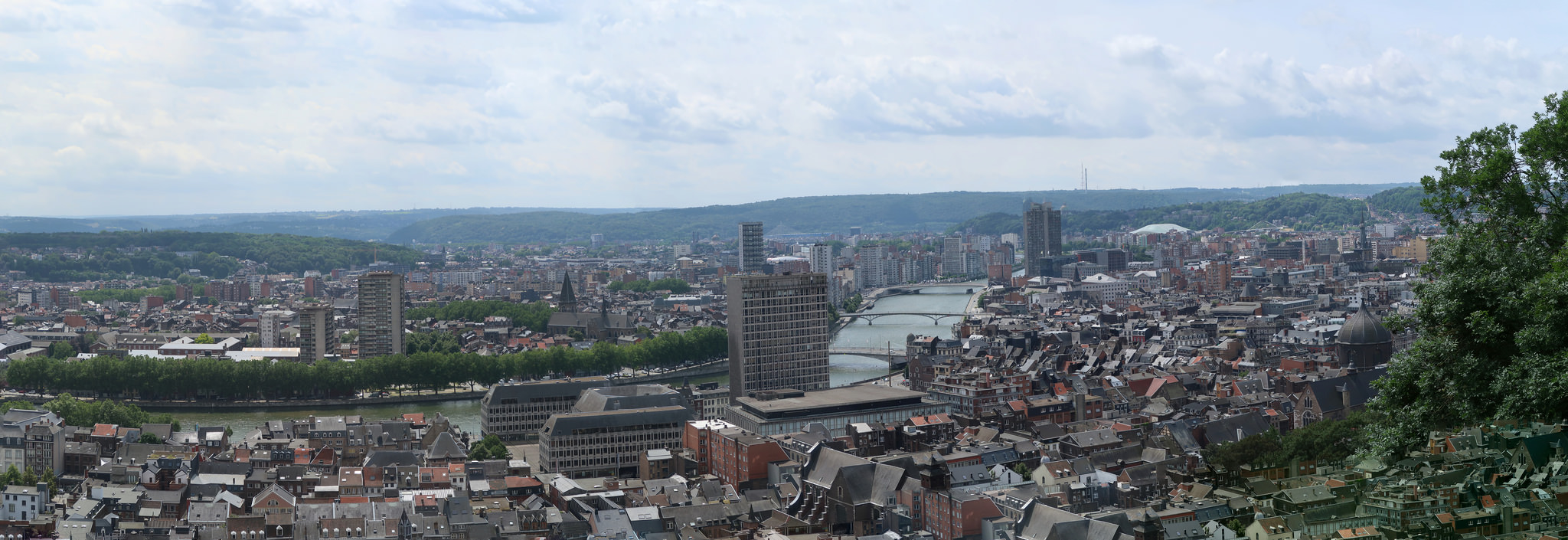A visit to a lesser known part in our own country: Liège in Wallonia (the south of Belgium). Lesser known because mostly we visit cities in Flanders, or abroad. It must have been since a school trip we actually took the train and went for some sightseeing deep down (well, to put this in perspective: about 125km from Ghent).
 Liège is the biggest touristic city of Wallonia, known for its waffles, sirup, meat balls, the music festival Les Ardentes and the cycling race Liège-Bastogne-Liège to end the classical season in Belgium.
Liège is the biggest touristic city of Wallonia, known for its waffles, sirup, meat balls, the music festival Les Ardentes and the cycling race Liège-Bastogne-Liège to end the classical season in Belgium.
We arrived in the big train station Liège-Guillemins. Let’s call it Belgian surrealism why such a big station had to be build on this place, far away from the actual centre. However, the station does receive thousands of commuters every day and the high speed train which requires specific infrastructure. But the building is magnificent! It is designed by Calatrava, very recognisable and a bit simular to the Art and Science site in Valencia, Spain.
 From the contemporary railway station to the old city centre only takes about 10 minutes by train (Liège Palais). The second you get out, two important places are well worth a closer look: the Palace of the prince-bishops at the left and the big Place St-Lambert in front (where the foundations of a Roman villa were found). To get to a lovely viewing point – Montagne de Bueren – stay along the left side. You’ll pass The Perron, which symbolizes the freedom of the people of Liège. The Montagne de Bueren is a steep hill, 374 stairs make it easy ( 😉 ) to climb. These steps actually had a real function: the soldiers who stayed at the Citadel could easily reach the city. The view from the top is beautiful! Just meters away to the right is this Citadel. A green space up in the hills, where you find remains of old bastions, but also lookouts over the city and her river. Several walking routes guide you through the woods, pointing out some interesting facts and monuments. The old city centre lays at the feet of the citadel. The churches and old houses, some in wood, most of them in bric, represent a rich history. More information on this and some interesting walking routes (pdf download) can be found at the very convenient website of the tourism board of the city of Liège.
From the contemporary railway station to the old city centre only takes about 10 minutes by train (Liège Palais). The second you get out, two important places are well worth a closer look: the Palace of the prince-bishops at the left and the big Place St-Lambert in front (where the foundations of a Roman villa were found). To get to a lovely viewing point – Montagne de Bueren – stay along the left side. You’ll pass The Perron, which symbolizes the freedom of the people of Liège. The Montagne de Bueren is a steep hill, 374 stairs make it easy ( 😉 ) to climb. These steps actually had a real function: the soldiers who stayed at the Citadel could easily reach the city. The view from the top is beautiful! Just meters away to the right is this Citadel. A green space up in the hills, where you find remains of old bastions, but also lookouts over the city and her river. Several walking routes guide you through the woods, pointing out some interesting facts and monuments. The old city centre lays at the feet of the citadel. The churches and old houses, some in wood, most of them in bric, represent a rich history. More information on this and some interesting walking routes (pdf download) can be found at the very convenient website of the tourism board of the city of Liège.
This city trip was a nice ‘get-to-know-your-own-country’ trip! see the pictures on ![]()
